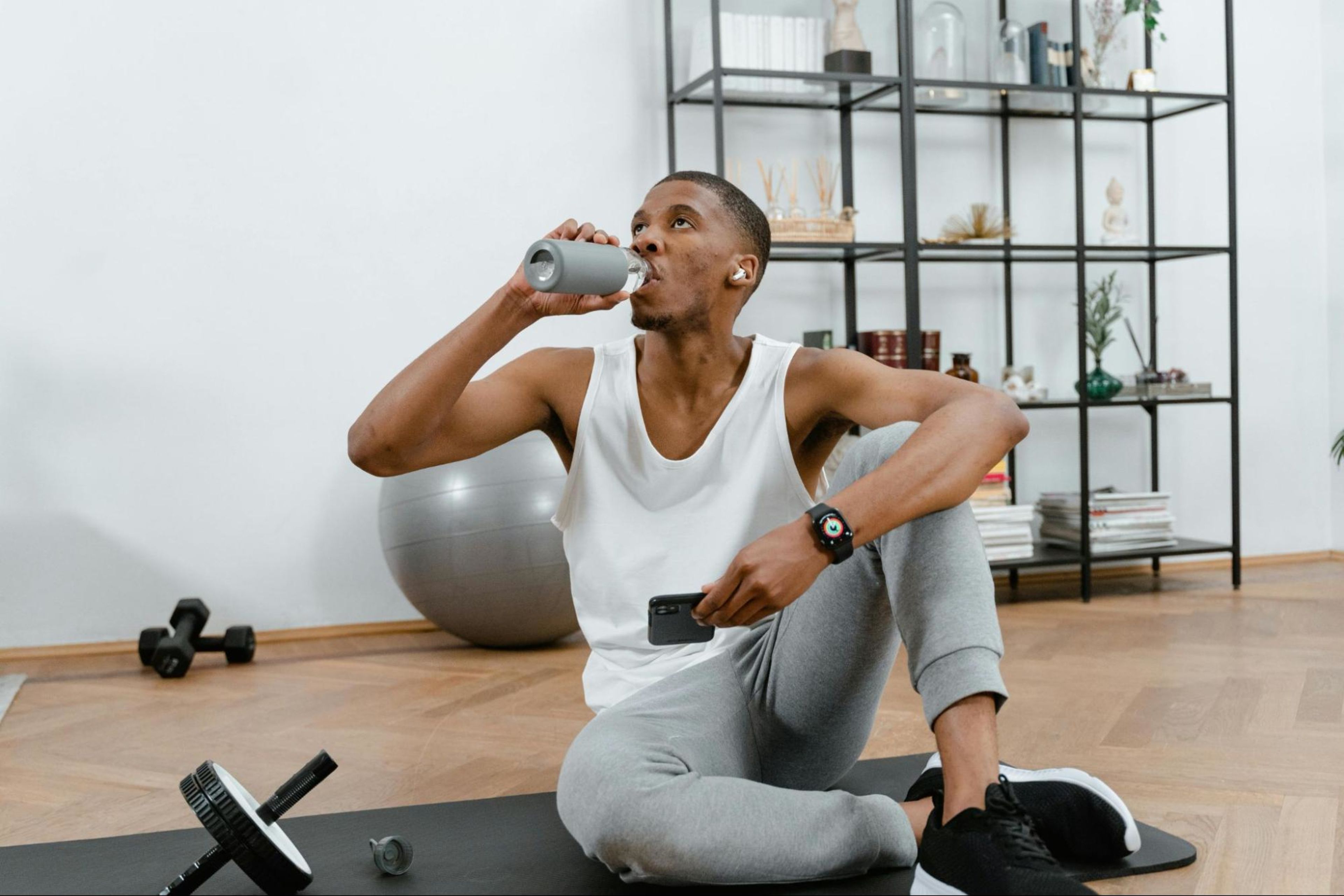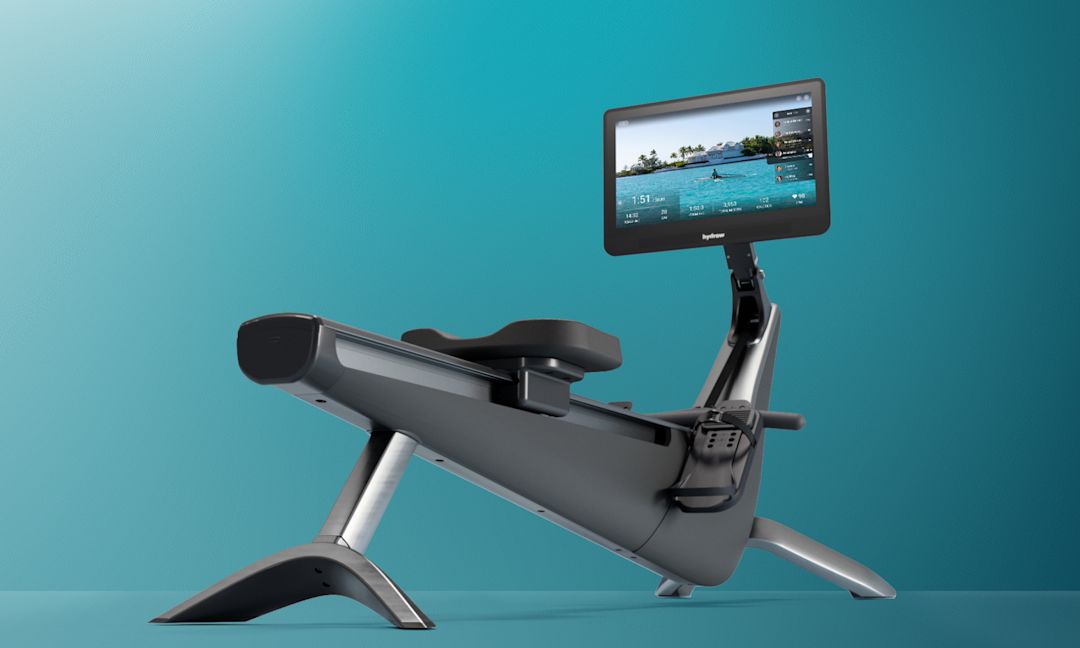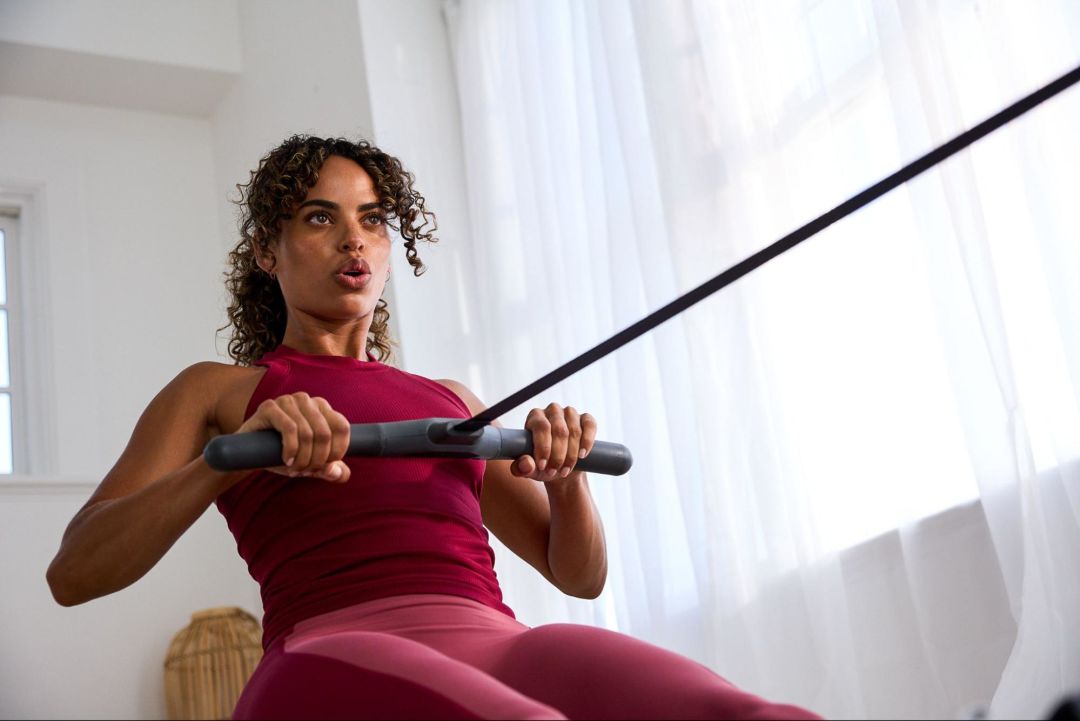How to Build a Home Gym: A Step-By-Step Guide

Home gyms and fitness spaces have become an increasingly popular type of home renovation, especially since the COVID-19 pandemic. According to a Statista survey, 40% of respondents in the U.S. own a home gym or home fitness equipment of some sort.
Investing in a home gym offers a host of benefits. For one, home gyms are more cost-efficient because they eliminate monthly membership fees. A home gym also saves you time, since you no longer have to commute to and from the gym, look for parking, or wait for your favorite machine to be free. And the best part, you can use your own shower when you’re done!
As wonderful as having your own in-house gym sounds, building a home gym from scratch can feel overwhelming and costly. You might not know where to even start! But setting up your personalized exercise space is easier and less expensive than you may think.
To help, we’ve compiled this step-by-step guide on how to build a home gym, including:
Let’s dive in!
1. Assess your space and goals
The first step to creating the perfect home gym for you and anyone living in your home is to evaluate the space you have available—or the space you can make available—as well as determine the personal goals you have for your home fitness program.
Location, location, location
Where you put your gym in your home is more important than you think. If it’s in an inconvenient spot or the space is dingy or too hot or too cold, it can make it difficult for you to stay motivated to use it consistently.
But don’t worry—you don’t need to build an addition onto your house just to get your workout in! Some things to consider when choosing a location include:
1. Airflow and temperature
If you’re setting up in a garage, basement, or attic space, lack of airflow and temperature fluctuations could make a difference in your comfort level. Consider whether there are any windows you can open or if there will be space to include a fan.
2. Noise levels
Depending on the type of exercise you’re doing and the machines or equipment you’re using, the noise of your workout can affect others in your household. If your home gym is located close to bedrooms or common living spaces, it might affect what time of day you can exercise.
There are some things you can do to reduce noise levels, like flooring, curtains, or partitions, but make sure you take this into consideration in the planning stage.
3. Storage options
If your home gym space is multitasking as a spare bedroom or a parking space for your car, you’ll want to consider storage options so your equipment isn’t sitting out full-time and creating a tripping hazard. Look at where you can include things like racks or a cabinet.
If you plan to include larger equipment, think about where that will sit, or where it can be pushed out of the way when not in use.

Holiday savings are here
Bring home our award-winning rowers at the best prices of the year.
Your personal fitness goals
Your fitness goals and interests will be a factor when assessing and choosing your space. For instance, the floorspace and storage requirements for a regular yoga practice will be very different from the requirements for a rowing machine, which will be different from requirements for a set of dumbbells.
Some things to consider:
1. Your current fitness levels
If you are a beginner exerciser, you won’t need very heavy weights to start with or specialized equipment. If you have balance or stability concerns, you may want to consider a rower rather than a treadmill for your cardiovascular needs. Rowing machines and ellipticals are also lower impact than a treadmill, if that’s a concern.
2. The types of exercise you enjoy
It can be beneficial to try new things and expand your exercise range. But when building a home gym, start with your favorite exercise options first. You can always add on later! If you like cycling, start with a stationary bike. If your routine consists of Pilates, a mat may be all you need to get going in your home gym.
3. Your short-term and long-term goals
Your home gym setup should reflect where you are right now in your fitness journey. But, for the best success, think long-term as well. Plan ahead for the space you’re considering in your home and what types of equipment and space needs you’ll have for the future.
For example, if you plan on including strength training into your routine, you’ll eventually need heavier weights if you’re doing it right, along with space to store them.
2. Plan your space
Once you’ve determined the best location for your home gym, it’s time to actually plan out your space. If you have the floor space, create different zones for different types of exercise. There are also other things to consider in your design process like lighting, flooring, and storage.
Exercise zones
If you have the room and plan to incorporate different types of exercise into your routine, having different areas for each can be helpful. A large cardio machine obviously takes up space, especially if it needs to be set up permanently and can’t be moved out of the way. Strength training equipment like kettlebells, resistance bands, or dumbbells would be another area. You may also want to consider a flexibility zone.
Keeping your equipment organized and orderly will help your workouts be efficient and reduce the risk of injuries from tripping over things or having equipment fall down.
Lighting, flooring, and storage
Proper lighting is important for safety, so if your space will need additional lighting, make sure you factor that into your plan. Flooring is another important thing that is often overlooked. Rubber tiles or mats make for a more cushioned and comfortable space and can minimize damage if heavy items are dropped.
Last, plan a location for storage. Things like shelves, racks, bins, or wall hooks all need a certain amount of space and easy access.
3. Set your budget
The average annual cost of a gym membership in the U.S. can be $250 to $800 a year for base-level memberships. Fees can go significantly higher for luxury amenities or boutique fitness centers. While the initial cost of setting up a home gym could be higher depending on how much you decide to start with, the savings over time once you have your home gym up and running, will be significant. For example, a home gym costing you $2,000 to set up can pay for itself in three years or less.
Many things can influence the overall cost of your home gym, including things we’ve already talked about like equipment, lighting, and flooring. But less obvious things like repair and maintenance costs, replacing broken equipment, fans or a dehumidifier, as well as nice-to-have things like wall mirrors or a TV, can add to the bottom line.
Home gym costs can vary dramatically from $30 for a yoga mat to $10,000 for a full-size cable strength machine and cardio equipment. The average cost of a new home gym is $1,000 to $1,500, but you can also set up a quality gym for much less. You can often stretch your budget by looking for good-quality, secondhand, or refurbished equipment, or investing in equipment over time to spread out the cost.
4. Create your equipment list
After you have assessed your space, outlined your personal needs, and determined your budget, make a list of the exercise items you want to include. Be sure to add items to your list even if your budget requires you to wait a bit before purchasing. Your list should include:
Cardio equipment
Strength training equipment
Flexibility and recovery tools
Helpful accessories
1. Cardio equipment
Your cardio equipment can be anything that gets your heart rate elevated, from a jump rope to a rowing machine. Some examples of cardio equipment to consider:
Boxing bag
Rowing machine
Treadmill
Elliptical
Fitness trampoline

Efficiency for the win.
Work 86% of your muscles in just 20 minutes of rowing with Hydrow.
2. Strength training equipment
There is a wide array of available equipment that can help you build strong muscles. If you’re tight on space or budget, look for options that are versatile enough to multi-task. Some examples of strength equipment to look for:
Dumbbells
Kettlebells
Resistance bands
Sand bags
Medicine balls
Suspension trainers
Exercise bench
3. Flexibility and recovery tools
Flexibility and recovery are often an afterthought in fitness programs, but don’t overlook their importance for a well-rounded routine. Recovery tools help you feel better faster so you’re ready to go hard for your next workout, and flexibility tools can assist with improving range of motion and reducing injury risk.
Some tools to take a look at:
Stretching strap
Massage gun
Compression boots
Cold plunge tub
4. Helpful accessories
There are so many accessories and add-ons that are not essential but can enhance your home gym experience. Choosing any of these items is a matter of personal preference and needs.
Here are a few things to think about for your home gym space:
Wall mirror
Floor fan
Sound system
Floor mats or rubber tiles
Storage racks
Towels
Once you’ve created your list, check and compare prices online or in stores, and look for sales and deals. If you choose to purchase used equipment, make sure it’s in good working order and has all required parts. An included owner’s manual for pre-owned equipment is always helpful but can often be found online, if needed.
5. Design your layout
When you assessed the space you plan to use for your home gym, you hopefully thought about where to put everything. Once you know exactly what equipment and accessories you will start with, you can create a more defined floor plan.
Equipment should be arranged, whether in a storage solution or a permanent setup, to be as accessible as possible and to optimize the flow of the space. You don’t want to have to step over things or move equipment out of the way every time you exercise. Design your space with efficiency in mind and keep it as uncluttered as possible.
Additionally, if you plan to hang a mirror, consider the best place for it that allows you to use it for checking your form without having other items in the way. Mirror tiles are a great option because you can configure them any way you want to fit your space.
For small equipment and accessories, plan for storage solutions that keep things off the floor. This prevents accidents and injuries and keeps your equipment in good working order. We recommend racks for dumbbells, shelves or bins for foam rollers and yoga mats, and wall hooks for resistance bands, jump ropes, or stretching straps.
6. Consider flooring and safety
Appropriate flooring for exercise is important for creating a safe space, avoiding injuries, and preventing damage to equipment or floors. Carpet isn’t the best option, as it can be unstable and can absorb sweat and odors, making it difficult to clean. If your home gym space is in a carpeted area, investing in a yoga mat or large rubber mat is a good idea.
Rubber flooring is a solid choice for almost any exercise space. You can purchase interlocking tiles to customize the size you need, and they can be moved around or added onto if needed. You can also find large rubber mats that fit under cardio equipment to protect your floors and create a stable surface.
Overheating can be a health concern if your home gym is located in a garage or attic space that is not climate controlled. Proper ventilation for your space is critical for safety. As mentioned above, a floor fan can assist with airflow, in addition to keeping you cool. Another option is to open windows or a garage door for ventilation and temperature regulation.

Explore Hydrow’s library of 5,000+ rowing, circuit training, yoga, Pilates, and mobility workouts.
7. Assemble and install your home gym
At this point, your home gym is almost ready for action. Once you acquire all your equipment, it’s time to assemble and set it all up in your space! Reading the owner’s manual and following all manufacturer’s assembly instructions will ensure your equipment is assembled and used properly, which minimizes risk of injuries, accidents, or broken items.
When you install your equipment or machines in your home gym space, make sure everything is positioned in such a way to allow you room to move safely. Also, make sure the equipment has enough room around it to operate correctly. For example, a cardio machine that is set up too close to the wall can hinder full range of motion or damage the wall or other items around it.
If purchased from reputable retailers, most large machines (such as cardio equipment or cable weight machines) may offer professional installation and setup. Even if there is a fee associated with this service, it might be worth budgeting for it to ensure the machine is put together correctly and works the way it’s supposed to.
8. Personalize your home gym
One of the advantages to having a home gym is that you can create it to meet your exact preferences and personality, not just by installing the equipment you want, but also decorating and personalizing it. Some ideas to consider for your space are decor, color, artwork, and plants.
Artwork such as banners with motivational sayings or fitness-themed images can liven up your space and keep you moving. If you have the ability to paint the space, color can also make a big difference. Bright bold colors or soft, pastel hues can each create a different vibe, depending on what you’re looking for.
Potted house plants can also brighten your space and help support good air quality. Surrounding yourself with plants, even just a single plant, can have mental health benefits as well. The presence of plants can boost your mood and enhance productivity. So, even if you only have a small corner space or a spot on a shelf, consider adding an easy-care plant like a snake plant or a spider plant to your home gym.
Time to work out!
Finally, the last step of building your home gym is using and enjoying it. Setting up a quality home gym takes some work and a financial investment, but the long-term benefits are numerous. You can exercise whenever your schedule allows without having to share space with strangers, find parking, or use public locker rooms. A personalized space can streamline your fitness routine and motivate you to stay on track.
If you’re considering adding a rowing machine to your home gym, Hydrow brings more than just equipment—it brings total-body results and intelligent training.
Each stroke works 86% of your muscles, delivering an efficient, immersive workout—and with real-time feedback and personalized scores, Hydrow helps you help you row smarter, build strength, and stay motivated. Just 20 minutes a day is all it takes to move with purpose, boost energy, and see results that last.
Hydrow’s workouts are led by world-class and Olympic Athletes and filmed on real water in beautiful locations around the world. Whether you’re rowing or cross-training with yoga, Pilates, strength, mobility, or circuit workouts, you’ll find movement that motivates—and keeps you coming back.
Ready to train smarter? Explore what Hydrow can do for you.

Real strength keeps moving
Learn how working out with Hydrow can help support a fuller, more active life.












